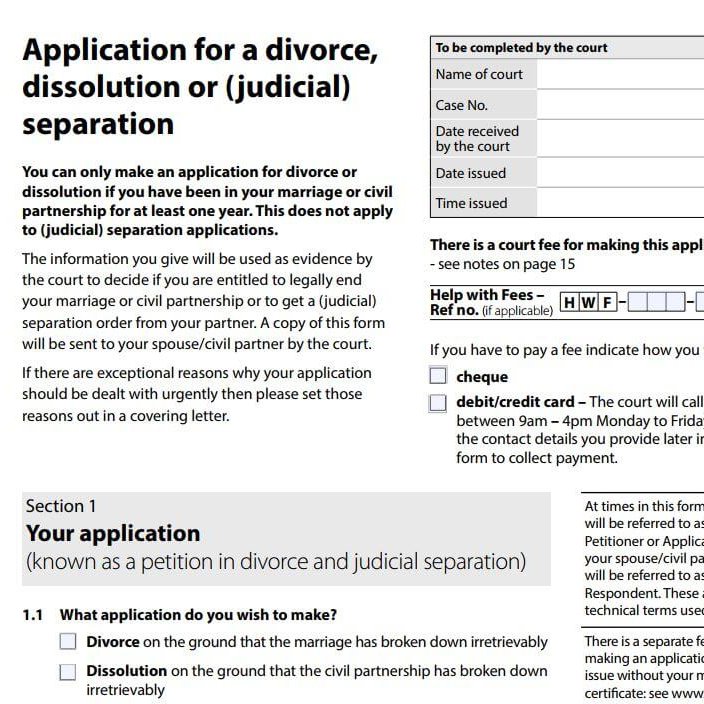The government has worked hard to produce a new form for starting divorce proceedings which is clearly aimed at members of the public as a way of obtaining a divorce without a lawyer. The trouble is that the system of divorce, which has been around for almost 50 years has a detailed set of laws and procedures and, no matter how many explanations are given within the form, problems are going to occur.
At a time when the Supreme Court is being asked to define what is meant by “unreasonable behaviour” then is it really wise to ask members of the public to choose themselves which of the five factors they rely upon to support a finding that there has been an irretrievable breakdown of the marriage and for them to decide on what facts are pleaded? If Tini Owens can’t establish her divorce after years in the system, will they? And will more choose facts that they can’t actually prove and which cause great tensions and distress such as alleging adultery (which most lawyers never use unless they have in their hand a signed consent due to issues of proof)?
The form now runs to 15 pages but many people may not realise that it does not get scrutinised until near the end of the process i.e. no-one legal looks at it until after the other party has returned their form saying if they defend it or not and then there has been an affidavit confirming the contents and an application to the court. This all takes a while. Many petitions get kicked back as, ultimately, no matter how simplified the form, this is a serious legal process and hoops need to be jumped. Divorce lawyers, having done a few, have less of a tendency to miss one of the many boxes that need to be ticked (yes this form does have to be absolutely correct).
There are significant parts of the law which the form seeks to explain in notes to the right hand side of the form – unfortunately the likelihood is that people will not realise how important the points are. For example, they may not complete the part of the form that asks for financial provision because at the time they feel that everything will be decided amicably. They may then get remarried and then realise that they should have made a claim e.g. for property but it would be too late. Any lawyer completing the form would tick the boxes knowing there is nothing to be lost in doing so.
The government knows divorce is a money spinner for the courts, the current fee is £550, whereas the cost of processing a divorce for the court is £270. There were proposals to hike this further. In the end it is generally a miserable time and having your petition returned or the other party becoming upset at your allegations is the last thing needed. It would be nice to think that the court divorce fee would not rise further so that individuals can afford legal advice to deal with a significant change of status and when they are likely to need advice as to finances, children and wills.
Image: New divorce application form, available here.

